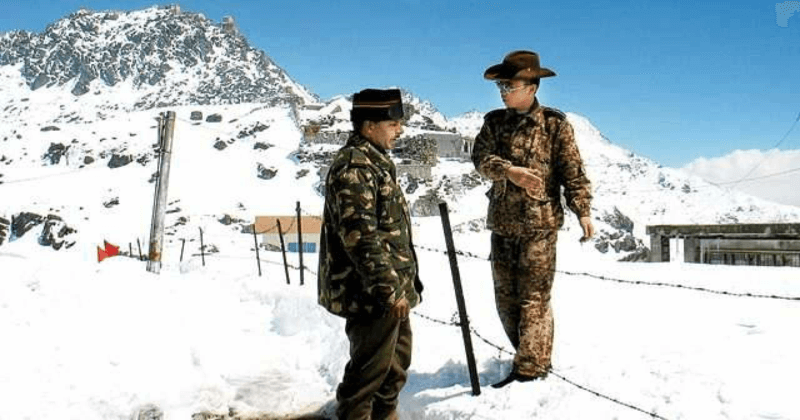
The expansionist policies followed by China have always been a headache to India. Now as the central government is taking stringent measures against this intrusion, the Chinese government is finding new ways to intrude into the Indian borders. A startling report came in the Hong Kong based South China Morning Post regarding China’s hideous aim behind the large-scale mining operations undertook on its side of the border with Arunachal Pradesh.
It was when China sensed danger in the Indian Government’s aggressive stand against trespassing as witnessed in the 73 days Dokhlam standoff, they are trying newer ways to intrude. The report about this mass mining activities along Arunachal Pradesh came just weeks after Indian PM Modi’s visit to Wuhan in China for an unprecedented informal summit with Chinese Prez Xi Jinping.
See also:India Transforming : Welcome to the New India with AI enabled Defense Equipment
As per South China Morning report, China has launched large-scale mining operations on its side of the border with Arunachal Pradesh. This area is a treasure trove of gold, silver and other precious minerals worth the US $60 billion.
China conducts these mining operations in Lhunze county close to the Line of Actual Control(LAC) with India. China’s historical stand on Arunachal Pradesh has been that its part of Southern Tibet and not India.
South China Morning Post report considered this mining activity as an indirect way to take over Arunachal Pradesh, though it seems to be a business plan. The people familiar with the project said that the mining is an ambitious plan by Beijing to reclaim South Tibet. The paper expressed its fears on the escalation of this situation same as that of the disputes surrounding ownership of South China Sea. Considering the Chinese methodology of expansionism, there is every chance that they will claim the region’s natural resources while rapidly building up the infrastructure. South China Morning Post expressed their fear that this could escalate to ‘another South China Sea’.The report had received inputs from local officials, Chinese geologists, and strategic experts.
The report is significant in the wake of an incident which happened in October last year. A herding family from Lhunze had written a letter to Chinese Prez Xi Jing Ping, to which he responded. This rare move from Chinese President’s part has significance as the family lived in Yumai, China’s smallest town in terms of population and in close proximity to Arunachal Pradesh. It was soon after the end of a tense military standoff on the Doklam Plateau over Chinese road building that President Xi Jinping underscored Beijing’s claim to the area in the letter to that herding family.
Recently, China has pumped unprecedently heavy investment in the country to build roads and other infrastructure. Considering the mining in other areas in Tibet, the mining operations in the Lhunze county have been progressing at a breakneck speed. There is also large-scale migration activities recorded in the area.
The report said that enormous, deep tunnels had been dug into the mountains along the military confrontation line, allowing thousands of tonnes of ore to be loaded and transported out by trucks daily, along roads built through every village.Communication networks and extensive power lines have also been set up. An airport is also going to be constructed.
The report also published a statement by Zheng Youye, a professor at the China University of Geosciences in Beijing. He remembered that during Indo-China war in 1962, the Chinese troops had pulled out of the areas in Arunachal Pradesh as there was no population to hold the territory. The Professor added that ‘the new mining activities would lead to a rapid and significant increase in the Chinese population in the Himalayas, said, which would provide stable, long-term support for any diplomatic or military operations aimed at gradually driving Indian forces out of territory claimed by China.’
In the South China Sea dispute, Beijing had built artificial islands and stepped up naval operations in the area to assert their claim to the territory. Hao Xiaoguang, a researcher with the Institute of Geodesy and Geophysics at the Chinese Academy of Sciences in Wuhan, Hubei, considered this move by China as a planned and determined activity to reclaim what they claim to be South Tibet, that is India’s Arunachal Pradesh!

Post Your Comments